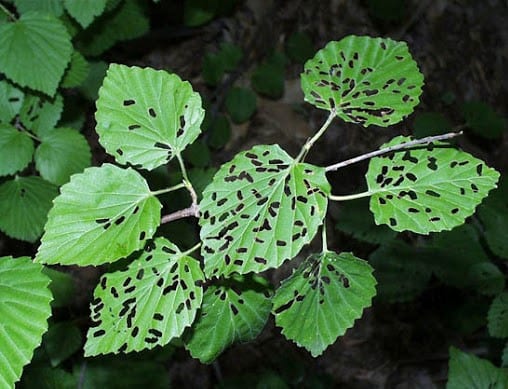Viburnum Leaf Beetle – Our Newest Exotic Insect
Written by: John Gall, Certified Arborist/Municipal Specialist WI-0249AM
Posted: 2016 | Insect Control | Spring
If you have viburnum shrubs on your property and live along the northshore, be on the lookout this spring for leaves being skeletonized, creating a lace-like pattern of foliar damage. This invasive pest, the Viburnum Leaf Beetle (VLB), is of European origin and started to appear in northern Milwaukee County (Fox Point/Glendale/River Hills) in 2014.
The larval feeding damage can resemble that of Japanese beetles. Severe infestations of VLB can cause complete defoliation, weaken plants over time, and lead to plant death. Larvae range from yellowish-green to light brown in color with a series of black spots and dashes on the body. Larvae can be up to ~⅓ inch long. There is only one generation of this insect per year, allowing for good control with a single pesticide application.
Control is best attained by treating the larval stage of this insect pest, typically mid to late May, targeting small larvae before significant damage can occur. Where a heavy infestation occurred the previous year, dormant oil applications in early spring can significantly reduce the number of hatching eggs.
The adults (~¼ inch long and yellowish-brown in color) emerge in early July and chew oblong holes in leaves, adding to the leaf damage. Spraying at this time is the “back-up” treatment plan for control if the larval stage is missed.
VLB prefers Arrowwood and Cranberry Bush viburnums. Selecting resistant varieties of viburnum can help prevent damage. ‘Dawn’, ‘Doublefile’, ‘Judd’, ‘Koreanspice’, ‘Leatherleaf’, and ‘Tea’ varieties have all shown resistance in research trials.
Be sure to contact your Wachtel Certified Arborist if you noticed this damage last year.




